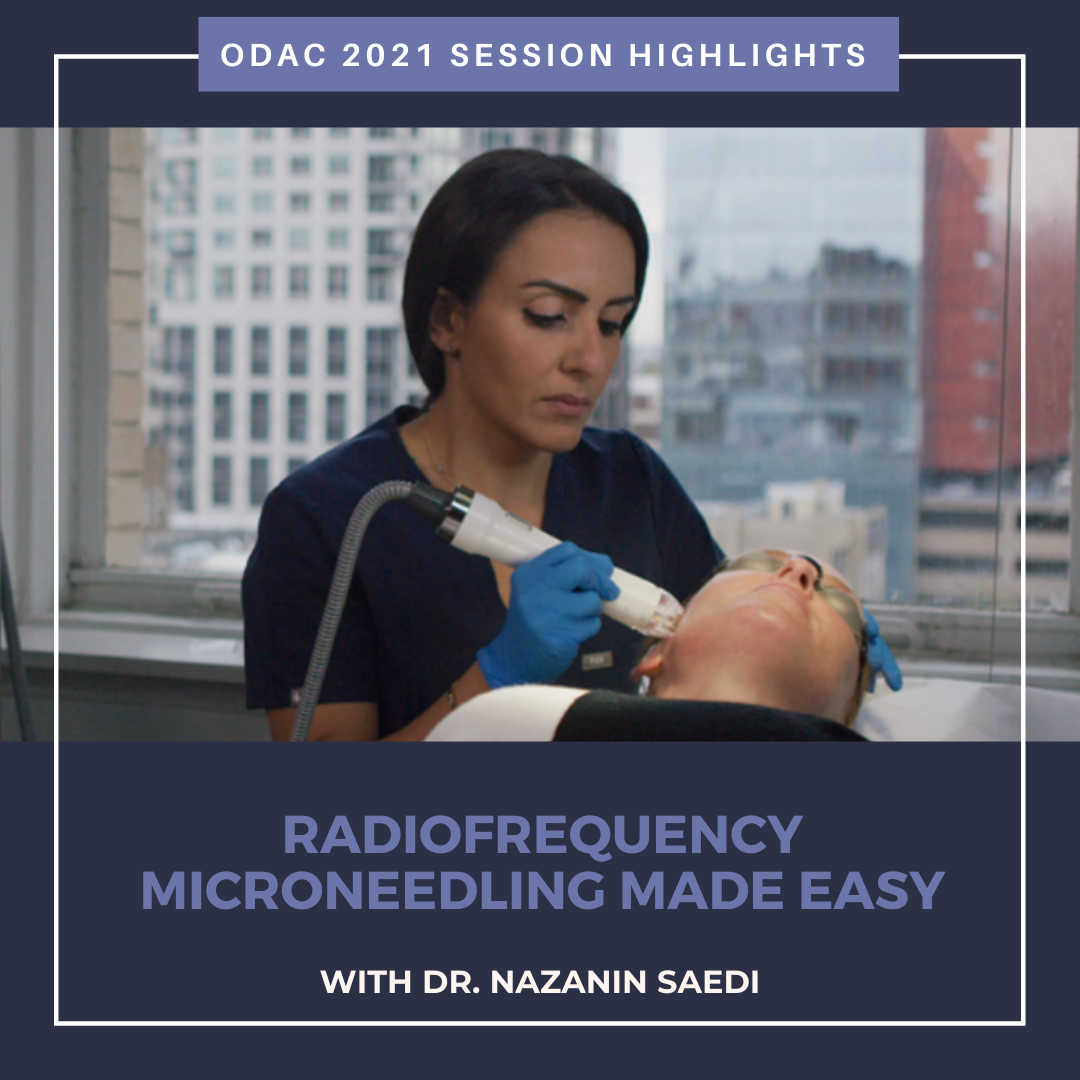During the 2021 ODAC Dermatology, Aesthetic and Surgical Conference, Dr. Nazanin Saedi, former Associate Professor, Director, Laser Surgery and Cosmetic Dermatology, and Co-Director, Cutaneous Surgery in Department of Dermatology & Cutaneous Biology at Thomas Jefferson University gave us the rejuvenating talk we all needed: “RF technologies, Making sense of it all”
1. What is radiofrequency microneedling?
Microneedling is the art of placing small, grouped needles into the skin at varying depths to induce remodeling and new collagen formation.
When we add Radiofrequency to microneedling, we are adding in the element of heat-induced damage to the skin, which further increases collagen deposition and remodeling.
Radiofrequency microneedling can improve scarring, skin texture, dyschromia, and skin laxity.
Radiofrequency is a controlled electromagnetic system, by which electrons flow from positive to negative electrodes, converting kinetic energy to thermal energy in the skin (i.e., producing controlled heating and damage, which leads to skin remodeling).
RF devices can be monopolar or bipolar. In monopolar devices, current flows from the device into the dermis, hypodermis, then deeper subcutaneous tissue. This allows deeper penetration (see figure below). In bipolar devices, current flows between poles within the device, passing through the dermis only. The depth of penetration is limited by the distance between electrodes, but overall, bipolar RF penetrates less deeply than monopolar devices.
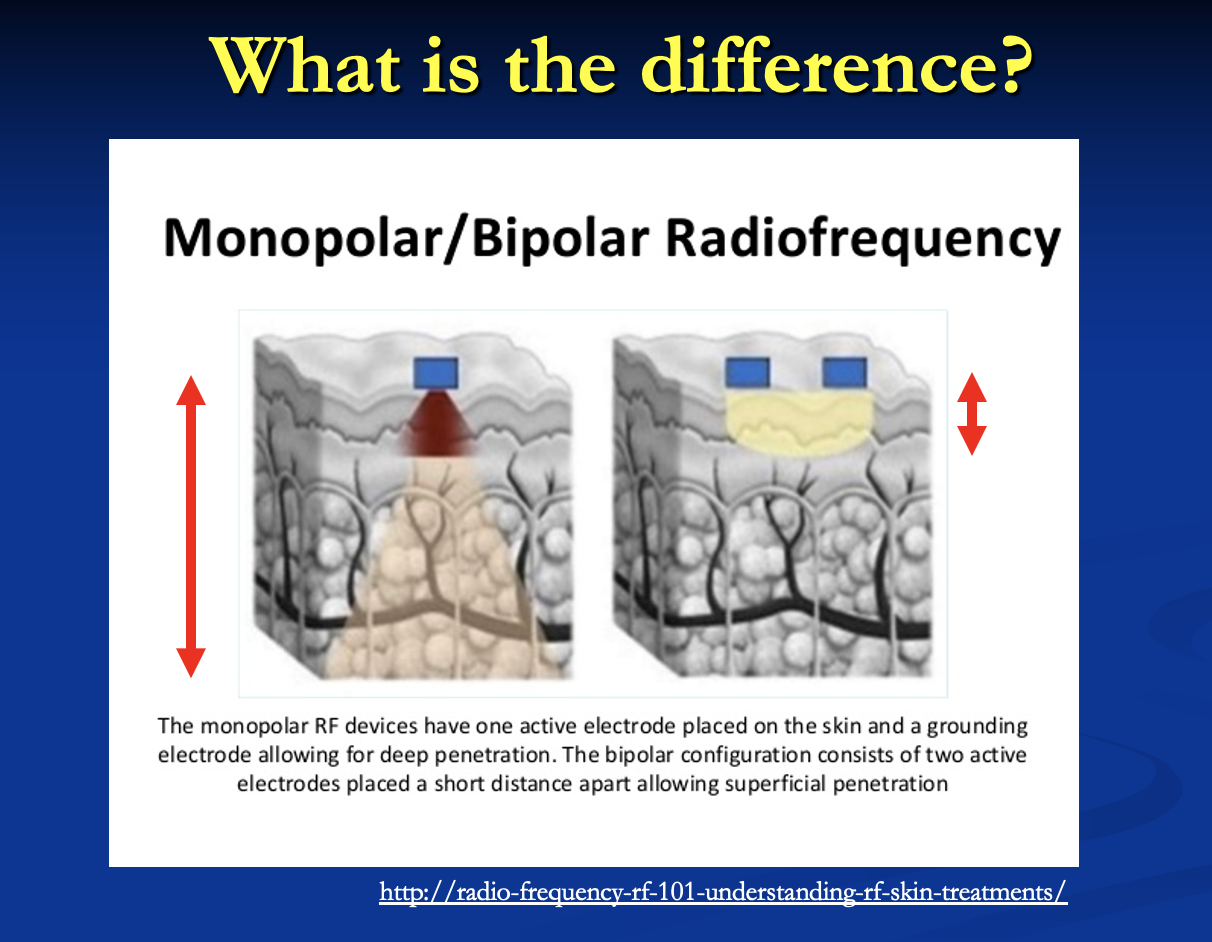
2. Who gets RF microneedling?
Those who want improvement in:
-
- Skin texture
- Skin tightening
- Rhytides
- Acne Scars
- Striae
It may take several sessions to see improvement.
Caveat: Dermatologists are not magicians. If a patient has atrophic skin or extreme laxity, he or she may not be the best candidate for RF microneedling. RF microneedling does not replace surgical modalities for extreme skin laxity.
What about darker skin types?
Radiofrequency microneedling is chromophore blind. It causes nonselective tissue heating. This means that it is safe in all skin types (when used by a trained professional).
Who cannot get RF microneedling?
(Those with unrealistic expectations)
Patients with pacemakers
3. How do we prepare patients for RF microneedling?
Prior to starting RF microneedling, we need to make the patient feel comfortable. Pain varies based on depth of penetration as well as anatomic site and patient’s personal inclination. The most basic form of anesthesia is topical lidocaine. Dr. Saedi likes to use topical 30% lidocaine and let it sit for 30 minutes.
Pain control can consist of1: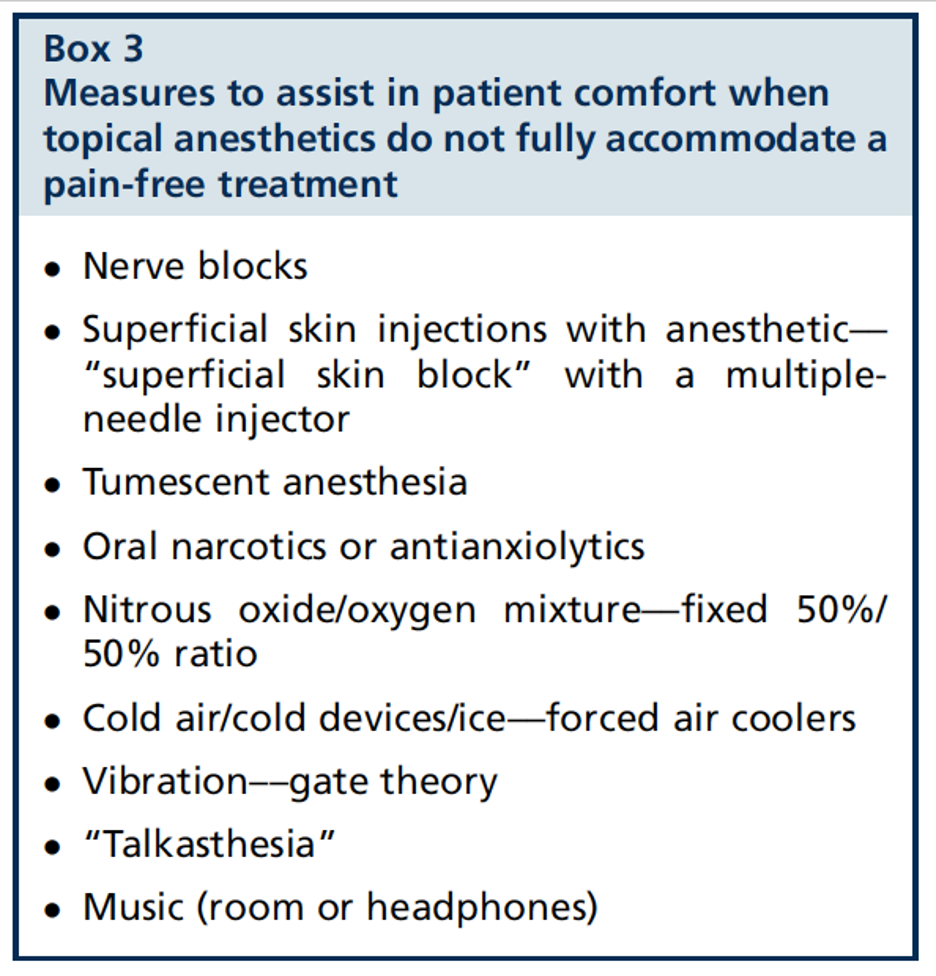
4. How is RF microneedling performed?
In order to perform RF microneedlng, we must understand how to set the parameters:
1. Depth
-
- Needle depth can vary from 0.5-4.5mm
- Superficial depths are for rhytides and shallow scars
- Deeper depths penetrate to the reticular dermis. They are for deep scars and tightening.
The problem: needles may not actually go as deep as you set them. This could be due to tissue resistance, operator technique, needle dulling, power of the motor, etc.
2. Number of needles
-
- Needle number varies from 10-60 depending on the device
- Needle # correlates with the degree of damage/density of treatment
- Use smaller # of needles for smaller areas
Clinical pearl: more needles=larger motor=larger handles=more force needed to insert the needles uniformly=impedance of insertion process
3. RF time
-
- RF time equates to how long we are delivering the RF energy
- Longer RF time= more tightening effects
Caution: longer RF time is more painful for the patient
4. Needle insulation
-
- Insulated needles deliver energy only at the tip of the needle
- Insulation means that the epidermis is spared
- → no heat/energy is dispersed here, only the dermis for a more targeted effect (see below)
-
-
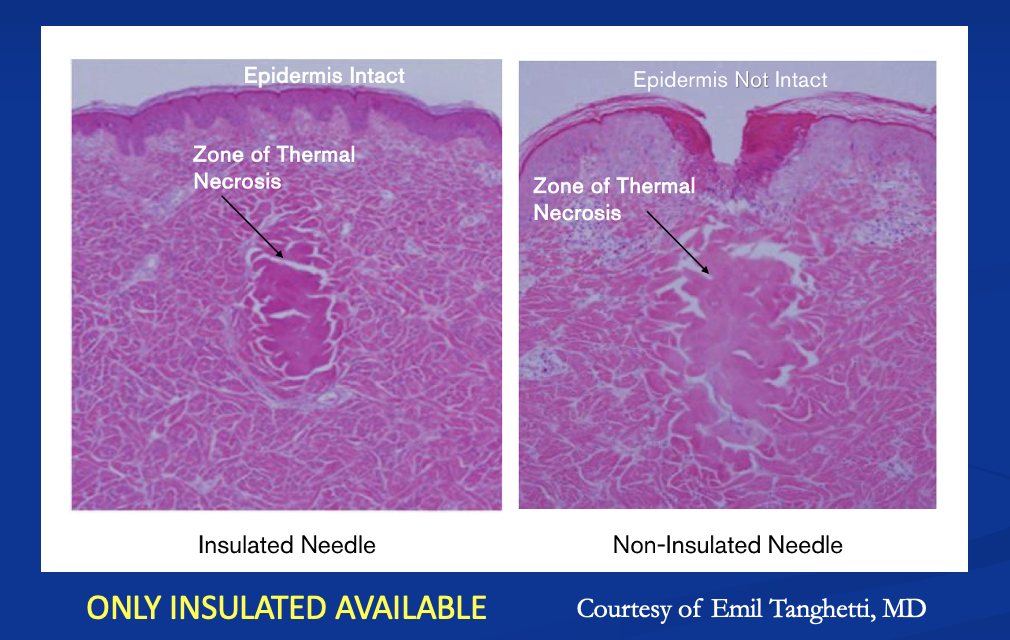
Slide courtesy of Dr. Nazanin Saedi → insulation= use for darker skin types to avoid PIH, burning
- Non-Insulated needles deliver energy throughout the entire needle from the stratum corneum down to the dermis (see below)
-
-
-
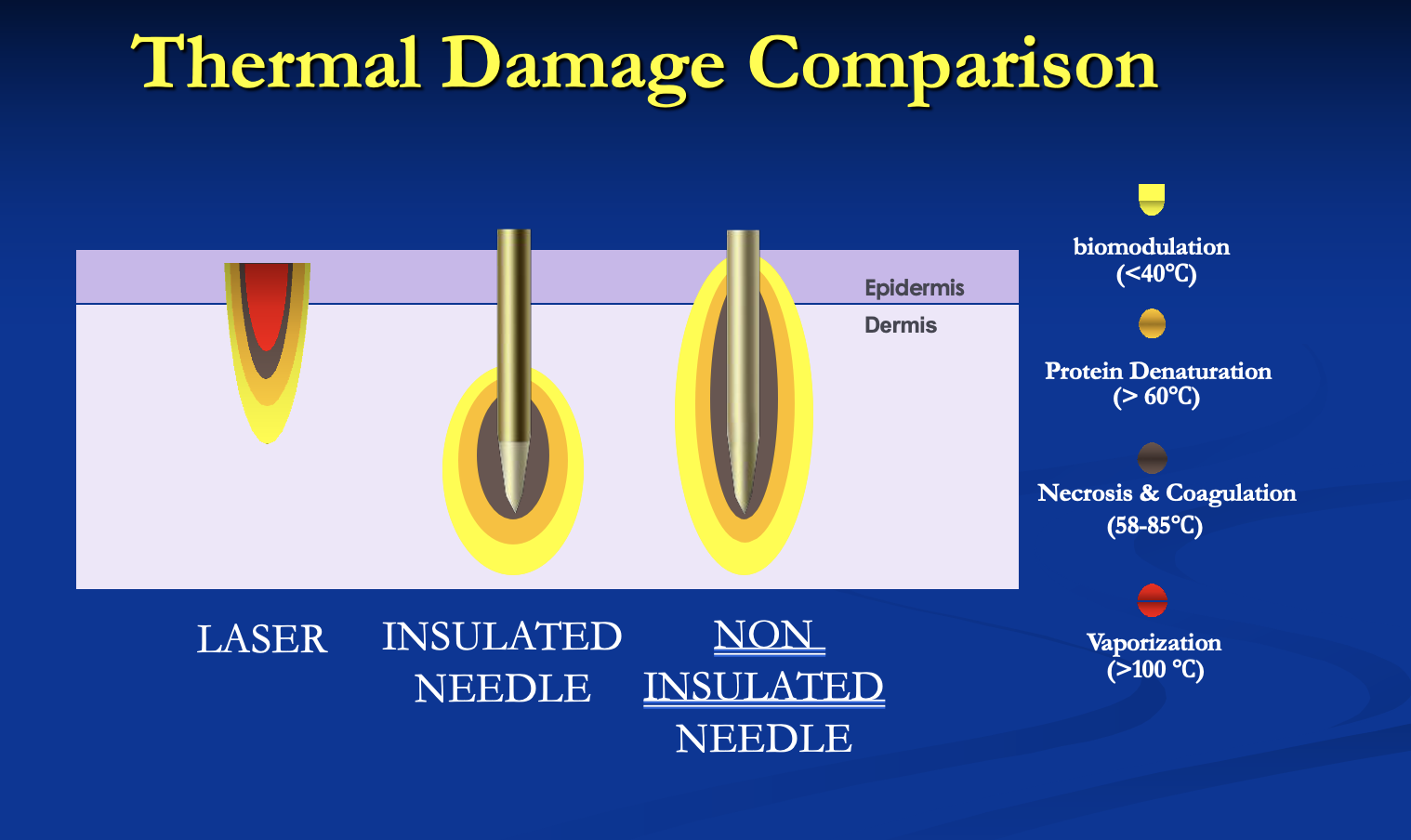
Slide courtesy of Dr. Nazanin Saedi →non-insulated needles = more tightening
-
Some devices offer only non-insulated vs insulated; some give you the opportunity to choose
5. Exploring different devices
There are many available RF microneedling devices! Unfortunately, research is lacking in head to head comparison trials between devices.
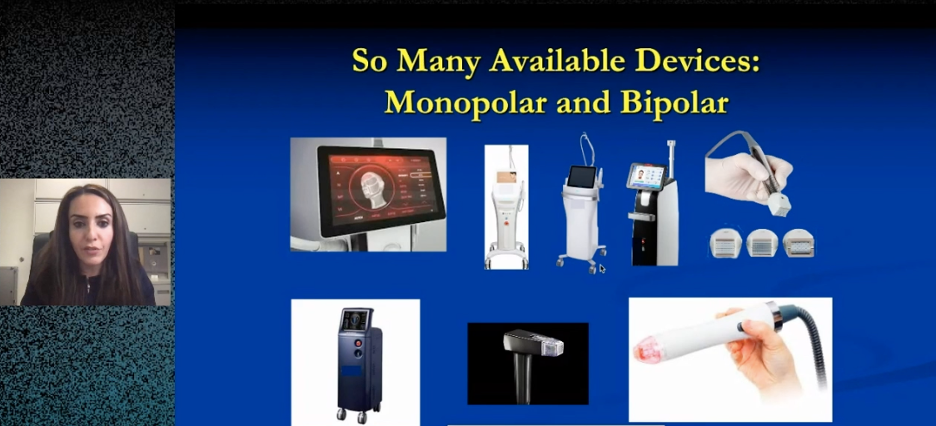
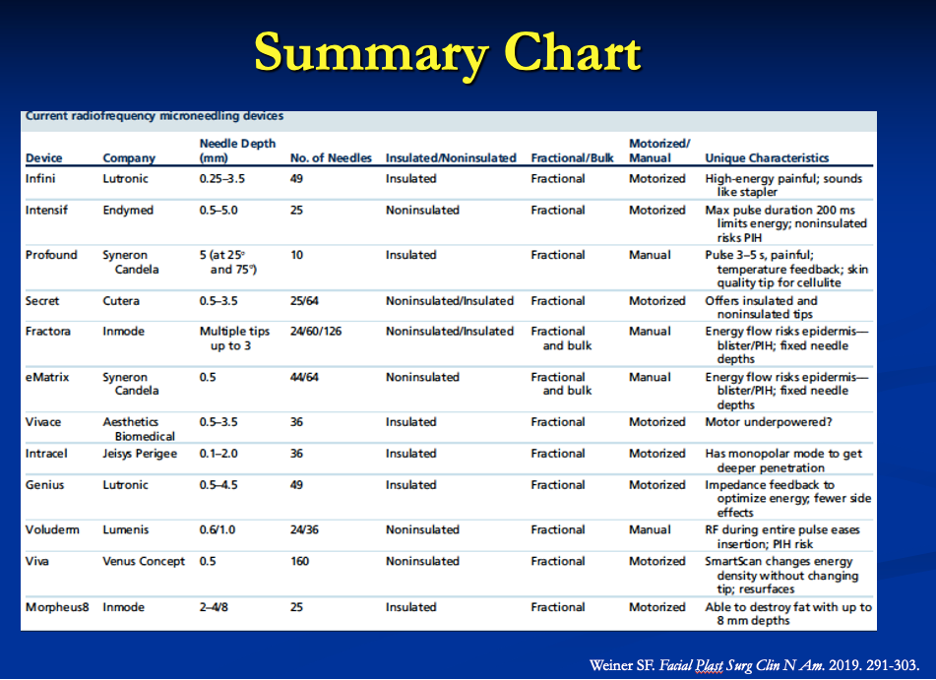
Dr. Saedi highlighted a few devices:
1. Lutronic Device: Infini (see table above)
This device is a high intensity focused monopolar RF (remember monopolar devices go deeper for better tightening, but are painful). It consists of 49 insulated needles which can be adjusted to 0.5-4.5mm depth. It also offers impedance feedback to optimize energy.
2. Aesthetics Biomedical device: Vivace (see table above)
This device offers 36 insulated needles penetrating at depths 0.5-3.5mm. It has a robotic motor and offers varying LED lights. Per Vivace, Red LED light stimulates ATP while Blue LED light kills bacteria and may improve active acne.
3. Cynosure: Potenza RF microneedling device
This is a new device with 4 different RF modes (monopolar, bipolar, 1mHz and 2mHz). Note: lower frequency (ie 1mHz) is associated with longer wavelength and deeper penetration/greater zone of injury, but more pain. It also has 9 different needle tips (multi-needle arrays in various densities: 16,25,or 49 needles, single needle tips, depths 0.5-4mm). The needles are semi insulated.
Note: when deciding on devices, it is important to think about how user friendly the handpiece of each device is. More needles usually means a larger handpiece, which is hard to maintain appropriate pressure and contact with the skin. Also, we need to remember not to move the handpiece until all needles are out (which also may be harder with more needles that are penetrating deeper). Dr. Saedi prefers smaller hand pieces for acne scars, wrinkles under the eyelids, and perioral rhytides.
Here is Dr. Saedi in action (pre-COVID era)
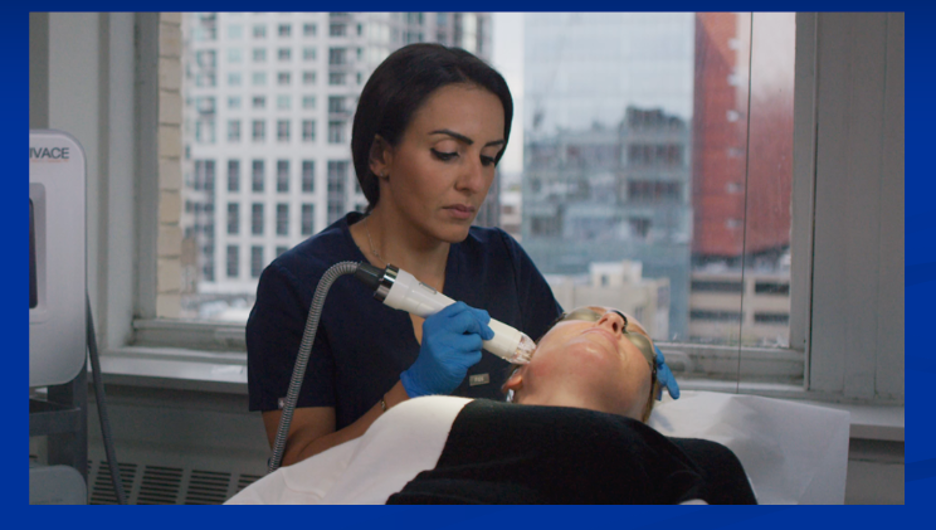
6. Complications of RF microneedling
See Dr. Saedi’s (modified) slide below for complications and some solutions to prevent them:
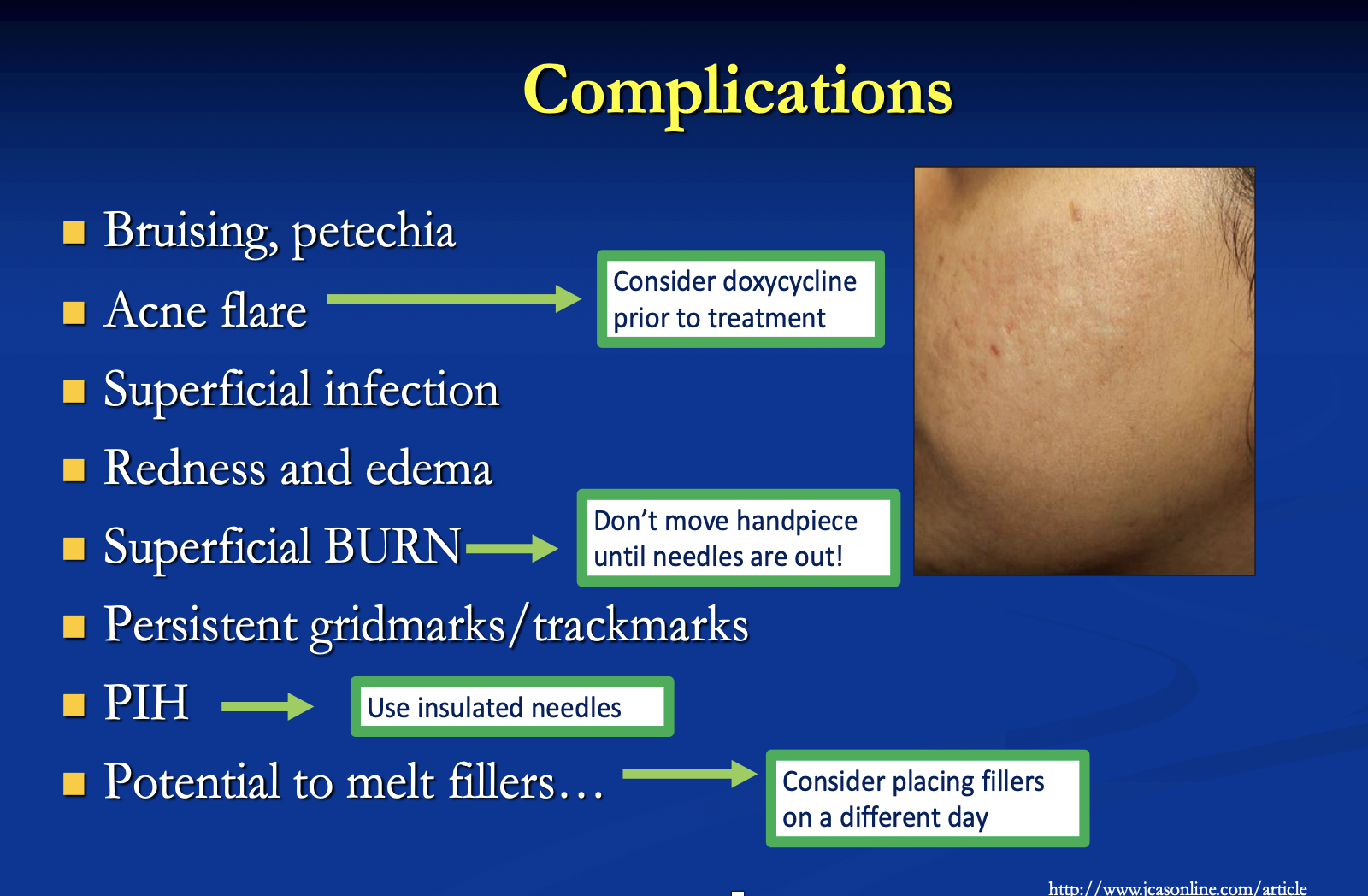
As Dr. Saedi wrapped up her presentation, she provided key take aways for RF microneedling:
-
- It works, but might not be the absolute best for tightening
- Improves skin texture
- Safe in all skin types
- Enhances results of other treatments (think about combined modalities)
- We need more literature regarding these devices + comparison of devices (how do we possibly choose which one to use?
References
-
- Weiner SF. Radiofrequency Microneedling: Overview of Technology, Advantages, Differences in Devices, Studies, and Indications. Facial Plast Surg Clin North Am. 2019 Aug;27(3):291-303. doi: 10.1016/j.fsc.2019.03.002. Epub 2019 May 22. PMID: 31280844.
Did you enjoy this article? Find more on Aesthetic Dermatology here.

